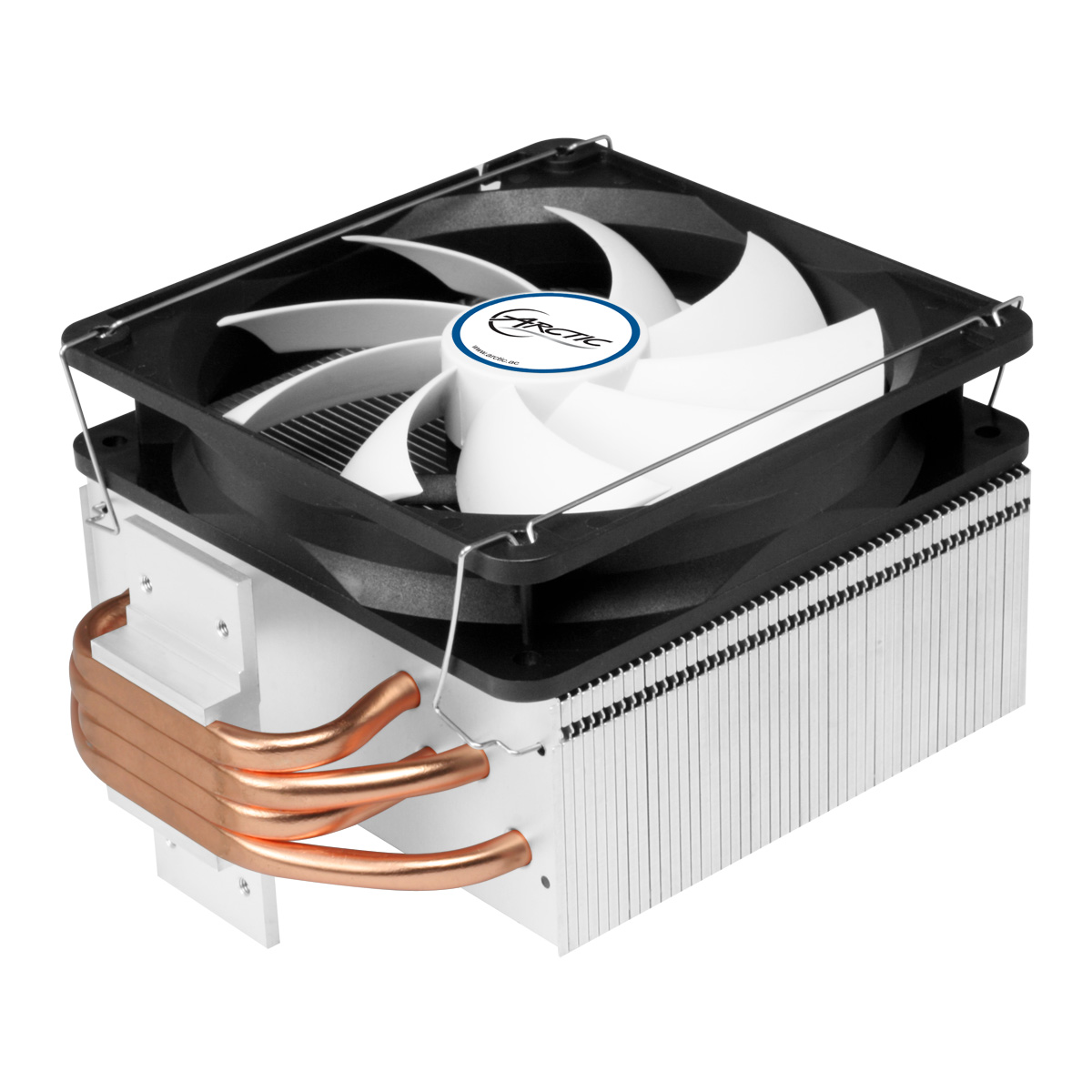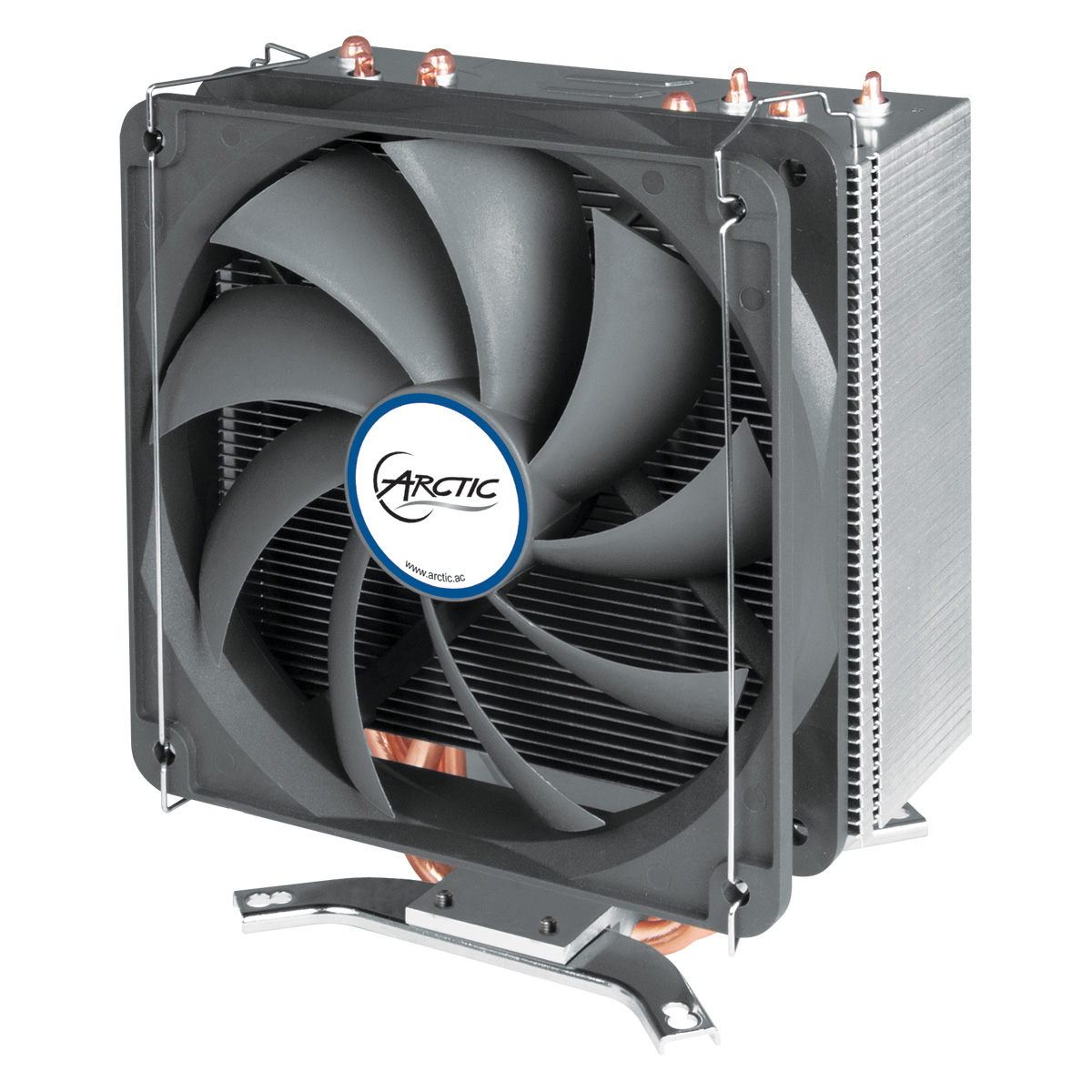Arctic Unveils Three Freezer-Branded Semi-Passive Coolers
Arctic unveiled two new CPU coolers that target enthusiasts who value a silent PC. The new coolers are in Artic's Freezer line, and are named Freezer A32, Freezer I32, and Freezer I32 CO.
Arctic refers to these coolers as "semi passive" because at low temperatures the fan is set to completely turn off. So long as the CPU stays relatively cool, the fan on the cooler will remain off in order to keep the ambient noise as low as possible. After the CPU starts to heat up, the fan then turns on and works to keep the processor from becoming too hot, but the design continues to favor silent operation above all else. As such, even with the fan active, it will strive to remain as quiet as possible by varying the fan speed.
It should be noted that Arctic is taking a questionable tactic with this cooler. The two coolers are completely identical in terms of the fan, heatsink and heatpipes. The only difference between the two coolers is the mounting brackets. The Freezer i32 has mounting brackets exclusively for Intel sockets, whereas the Freezer A32 is only equipped for AMD sockets. Although many won't be affected by it, this could be inconvenient if the user later needs to switch the cooler to a different system.
Although these aren't the first coolers Arctic has sold in this way, it is one of the few major manufacturers of CPU coolers that does this.
In addition to the A32 and I32, there's the Freezer I32 CO, which is, again, virtually the same cooler. This model is only for Intel sockets, and it uses a dual-ball bearing fan instead of the fluid dynamic bearings used inside of the fan on the other coolers.
All three coolers are available now. The Freezer A32 and I32 carry a $49.99 price tag, and the Freezer I32 CO comes in just a little higher at $59.99.
Follow Michael Justin Allen Sexton @EmperorSunLao. Follow us @tomshardware, on Facebookand on Google+.
Get Tom's Hardware's best news and in-depth reviews, straight to your inbox.
-
Blueberries Should be a BIOS feature on every motherboard in my opinion. The higher quality ones should have this option for any PWM fan already.Reply
The difference between a low speed curve on a silent fan (e.g., Noctua's 120mm design spins at a low speed of 300RPM) and off is hardly audible either, especially inside of a case, so it's a niche really. -
synphul Arctic is out of their mind with those prices. They've got roughly the same build as the 212 evo, I imagine the performance is on par (or less) for twice the price. $60? The nh-d14 is $65. These are $25-30 coolers at best. For $65 worth of nh-d14 you get a twin tower cooler with 2 of some of the industries best fans that don't suffer from cheap bearings.Reply
At one time arctic had a good thing going but I can't help but feel they're lacking innovation (2 different coolers for 2 different sockets, seriously?). They're quickly going the way of antec and zalman if they don't shape up. They put their $60 cooler in the ring with other $50-60 coolers and they're going to get slapped around in the benchmarks. The last decent thing I can recall them making were aftermarket coolers for gpu's but that's been years ago now. -
Calculatron I owned the Arctic Freezer A30, and it was a fairly solid product. Arctic F12 fans are pretty good too, especially for the price.Reply -
alextheblue ReplyShould be a BIOS feature on every motherboard in my opinion. The higher quality ones should have this option for any PWM fan already.
If there are awesomely silent fans out there (such as a Noctua especially with the LN adapter installed) then why bother with motherboard-based semi-passive controls? At very low speeds the high-end PWM Noctuas (and probably some other premium LN fans) are inaudible anyway - regular PWM controls work perfectly and semi-passive is unnecessary and in some cases undesirable.
The difference between a low speed curve on a silent fan (e.g., Noctua's 120mm design spins at a low speed of 300RPM) and off is hardly audible either, especially inside of a case, so it's a niche really. -
IInuyasha74 Reply16674859 said:Should be a BIOS feature on every motherboard in my opinion. The higher quality ones should have this option for any PWM fan already.
If there are awesomely silent fans out there (such as a Noctua especially with the LN adapter installed) then why bother with motherboard-based semi-passive controls? At very low speeds the high-end PWM Noctuas (and probably some other premium LN fans) are inaudible anyway - regular PWM controls work perfectly and semi-passive is unnecessary and in some cases undesirable.
The difference between a low speed curve on a silent fan (e.g., Noctua's 120mm design spins at a low speed of 300RPM) and off is hardly audible either, especially inside of a case, so it's a niche really.
To be fair, I've actually had three motherboards with this feature built in. Though, since Arctic can know the typical amount of noise they generate at various RPMs and calibrate the fans with that in mind, I have the general feeling that this can regulate itself better than the motherboard could do it. -
Blueberries Reply16674859 said:Should be a BIOS feature on every motherboard in my opinion. The higher quality ones should have this option for any PWM fan already.
If there are awesomely silent fans out there (such as a Noctua especially with the LN adapter installed) then why bother with motherboard-based semi-passive controls? At very low speeds the high-end PWM Noctuas (and probably some other premium LN fans) are inaudible anyway - regular PWM controls work perfectly and semi-passive is unnecessary and in some cases undesirable.
The difference between a low speed curve on a silent fan (e.g., Noctua's 120mm design spins at a low speed of 300RPM) and off is hardly audible either, especially inside of a case, so it's a niche really.
The heat sink should be more than enough for the CPU at idle, and a single exhaust fan circulating air through the chassis should be all that is needed. The CPU fan should shut off when it's not in use just like a GPU or PSU, and they often don't. It increases lifespan for the fan (even fluid bearings) and prevents any potential noise (again noting that high quality fans are typically inaudible at their lowest PWM function). Good design is good design, what can I say?
But yes, my point was that the 0 RPM function is rather moot and should be a motherboard feature.
16674964 said:To be fair, I've actually had three motherboards with this feature built in. Though, since Arctic can know the typical amount of noise they generate at various RPMs and calibrate the fans with that in mind, I have the general feeling that this can regulate itself better than the motherboard could do it.
Au contrair. Unless you build a PWM controller that uses infrared heat signatures the motherboard will always do it best.


